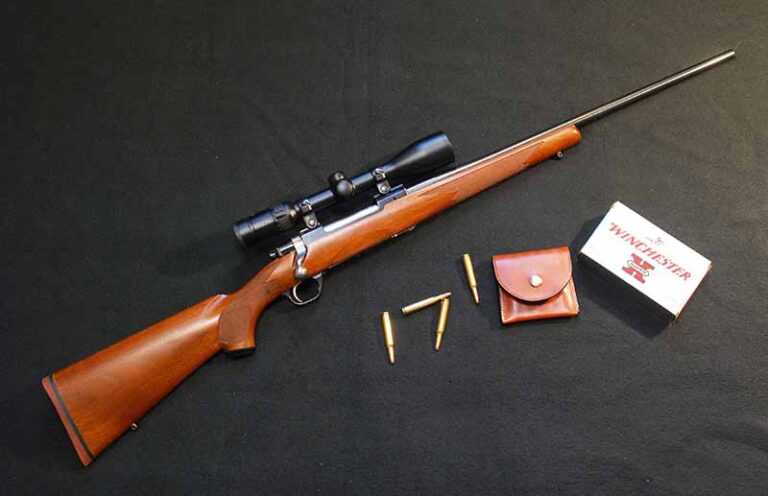
The author extols the virtues of his Ruger Hawkeye in .257 Roberts to explain why it has a permanent spot in his collection.
I now jokingly refer to myself as a dinosaur, meaning I’ve started using things like a Parker 51 fountain pen and a Buck 119 Special knife. That also means I like my bolt- or lever-action rifles made of metal and wood and am happiest when my rifle is a classic sporter and wears iron sights.
My first centerfire rifle was a Mauser 98, which I turned into a sporter configuration. That rifle was eventually traded for a handgun I wanted, but I never lost my love for rifles designed with the features of the Mauser 98 action. I have some rifles with push-feed actions, and they work perfectly, but there is something special about the Mauser.
When it came time to add a rifle in .257 Roberts caliber for reloading work, I wanted one with the classic features of the 98. At that time, the obvious choice was a Ruger Model 77 Hawkeye. I already had a Model 77 Mark II in 7×57 caliber, and almost all features of the newer Hawkeye were identical. Since the Model 77’s introduction in 1968, the Ruger bolt actions have had classic lines, Mauser-type claws, non-rotating extractors, and dual-locking lugs.
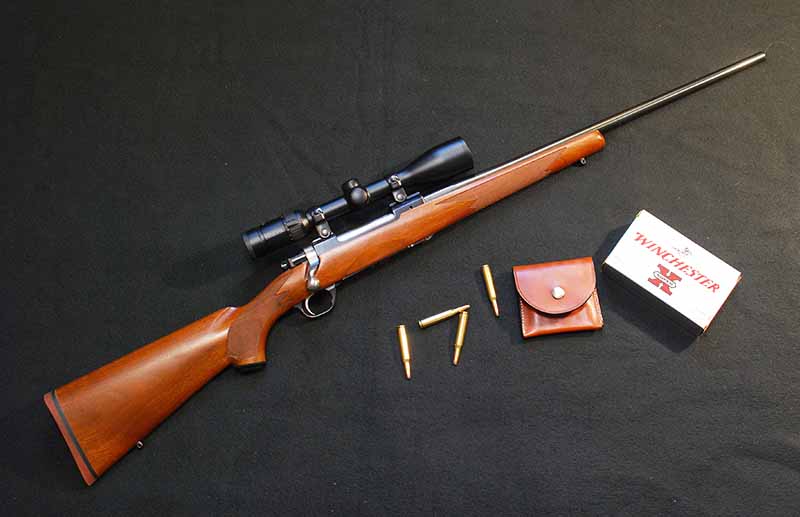
By the time the Mark II came along in 1991, the original tang-mounted sliding safety had been replaced by a three-position wing safety on the right-hand side at the rear of the receiver. In the rear position, the safety is “on,” and the bolt is closed and locked. In the middle position, the safety is “on,” but the bolt can be opened. While forward, the rifle can be fired. This arrangement is like the Winchester Model 70, and it would be difficult to imagine a more reliable or desirable type of safety that locks the bolt and firing pin. The Ruger Model 77 Hawkeye is available in numerous configurations and calibers, but the classic Hunter version suits me.
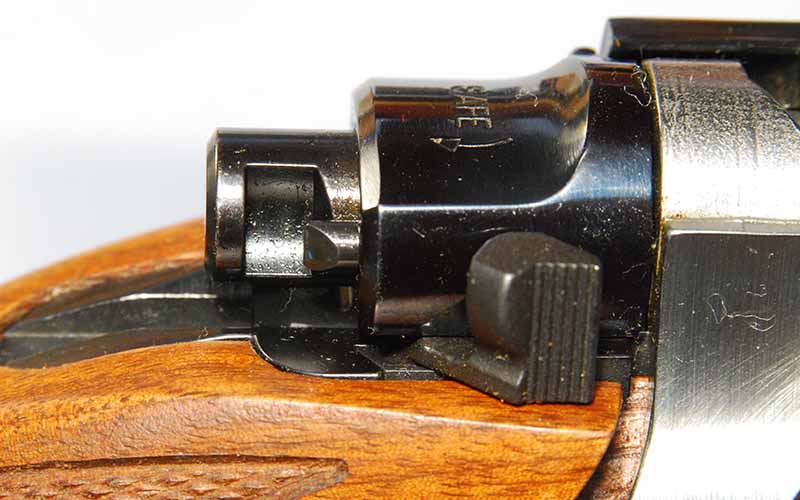
Taking a cartridge case designed for one caliber and changing the neck size to hold bullets of larger or smaller diameters has long been a common practice. A case that has been around since 1892 is the 7mm Mauser or 7×57. Its bullet diameter (bore or groove diameter) is .284 inch, but between the lands is .275 inch. Thus, the cartridge became known in Britain by that designation, and the .275 Rigby was soon world famous.
The 7×57 was loaded with a 173-grain round-nose full metal jacketed bullet with a muzzle velocity of approximately 2,300 fps. That is not spectacular by modern standards, but the bullets penetrated exceptionally well, as W.D.M. Bell proved using that load for elephants. Jim Corbett used the cartridge in sporting form extensively with his Rigby rifle in India, eradicating man-eating leopards and tigers.
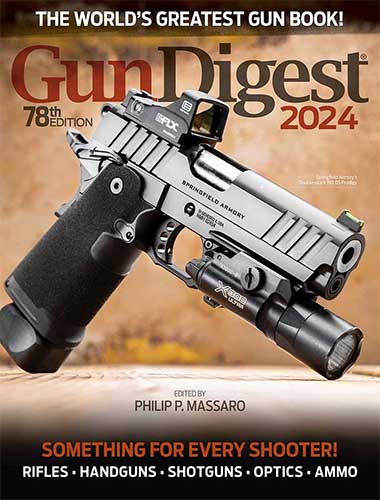
With a cartridge case as world-famous as the 7mm Mauser, it was only natural to be given the “neck treatment.” Necking it up produced the 8×57 Mauser that became a worldwide military cartridge. And by necking it down to hold .257-inch diameter bullets, Ned Roberts created a wildcat cartridge that Remington would eventually standardize in 1934 as the .257 Roberts. For many years, the .257 Roberts was a popular sporting cartridge chambered in several popular rifles, such as the Winchester Model 70 and Remington 722. Many custom rifles were also chambered for the round.
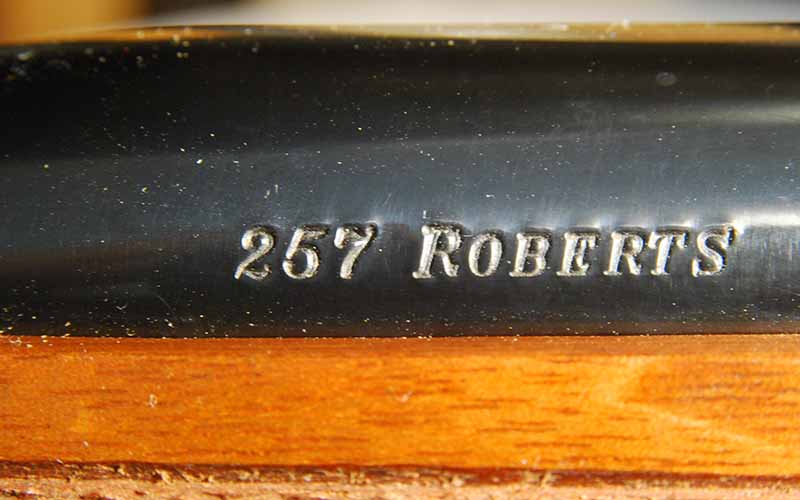
For many years, Warren Page was the shooting editor for Field & Stream, a Gun Digest contributor, and an avid competitor and experimenter. One of his projects involved necking the .308 Winchester to hold bullets of 6mm diameter — resulting in a cartridge close to the present .243 Winchester. Not to be outdone, Remington necked the .257 Roberts case to hold 6mm bullets and created the .244 Remington having a 1:12-inch twist. The .243, which has a 1 in 10-inch twist, was initially available with 80- and 100-grain bullets, the former intended for varmints and the latter for medium game. Remington loaded the .244 with 70- and 90-grain bullets.
The .243 was deemed by many as the more versatile cartridge, eventually leading Remington to change the twist rate to 1:10 and renaming the .244 the 6mm Remington. More than any others, these 6mm calibers led to the .257 Roberts’ decrease in popularity.
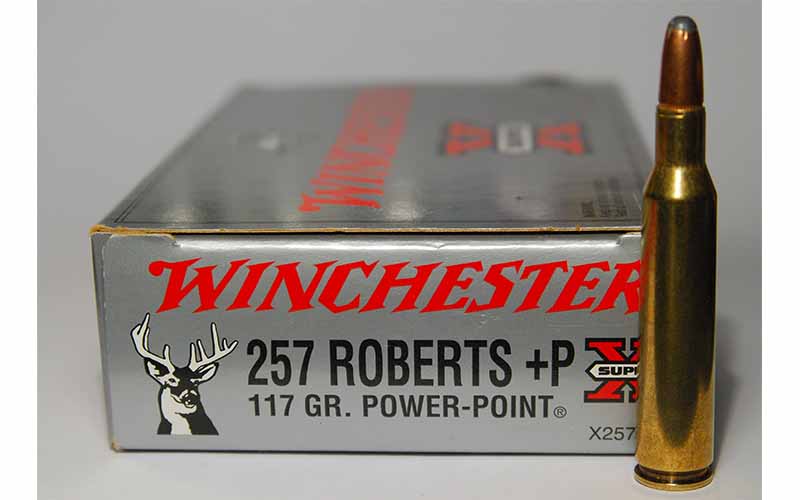
The advantages of the .257 Roberts over cartridges like the .30-06 Springfield, .270 Winchester, and 7mm Remington Magnum include reduced recoil while still giving relatively flat trajectory and adequate performance on varmints, predators, and medium game. However, when the .243 Winchester and .244 Remington were introduced in 1955, they quickly decreased interest in the .257 Roberts and .250 Savage calibers. The newer cartridges are more desirable for hunting varmints and predators, but the advantage, if any, for use on medium game is imaginary. Be that as it may, rifle makers produce goods to sell, so very few factory rifles are available in .257 Roberts.
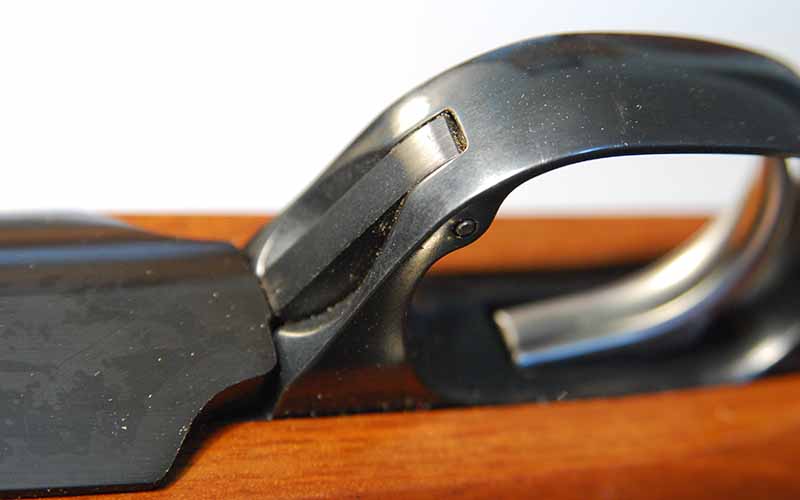
I always admired Page’s writing, and while working on reloading projects, I deemed it necessary to get a rifle in .257 Roberts. My choice then was the Ruger Hawkeye, so I had my local dealer order one. When it came, I completed the paperwork and admired the elegant rifle. Currently, the Ruger Hawkeye has an MSRP of $1,399, but I think it rivals some other classic rifles that are even more expensive.
My Hawkeye has a beautiful walnut stock that is superbly checkered with wraparound checkering on the forearm. Compared to all but one other rifle I own, the polishing and bluing are probably the best on the Hawkeye. I could not ask for a rifle that is more refined and beautiful. Moreover, it has the desirable features of the Mauser, the Ruger Marksman trigger, and excellent three-position safety.
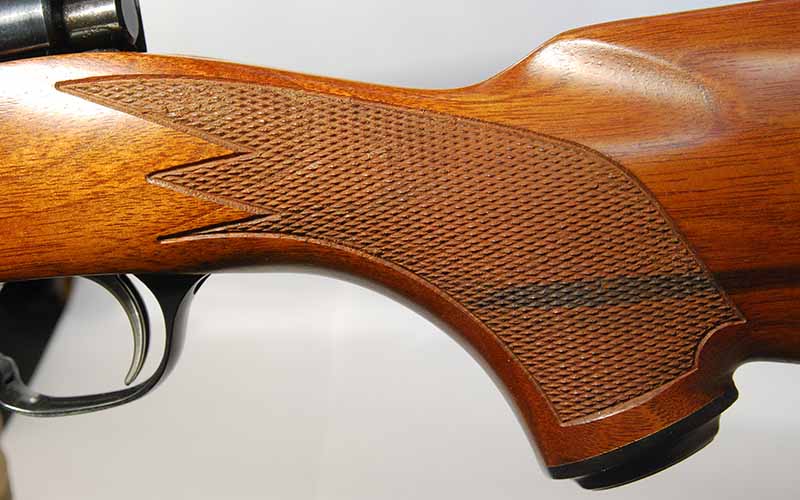
When it comes to .257 Roberts ammunition, the availability just about matches the availability of rifles in that caliber. I can find at least 10 factory loads in product listings, but just try to find any on dealers’ shelves, and if you find any, don’t look at the price tags. One factory option is the traditional 117-grain load with velocities of approximately 2,700 fps. Such a load is quite adequate for deer-size game under most conditions.
However, more exotic loads are listed by several companies. For example, Nosler lists ammo featuring the 110-grain AccuBond at 3,050 fps, 115-grain Nosler Ballistic Tip at 2,925 fps, and 100-grain Partition at 3,000 fps. Hornady has a Superformance load with the 117-grain SST bullet listed at 2,945 fps. Such loads transform the .257 Roberts into a good performer on medium game at rather long ranges.

Although some wonderful .257 Roberts loads may be listed in catalogs, my handloads add so much to the versatility and performance of the rifle. I’ve used bullets ranging from the 60-grain Hornady flat point intended for use in the .25-20 to the Speer 120-grain spitzer boattail. The 60-grain bullets loaded to about 2,000 fps will group into a ragged hole and work well (and quietly) on varmints.
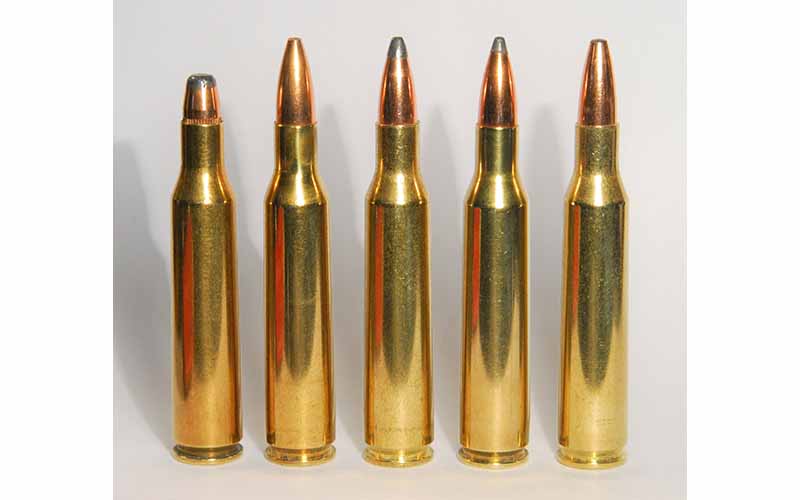
The range of bullets available in .257-inch diameter includes a great many styles. My favorite varmint load is the 75-grain Sierra hollowpoint with enough IMR-4064 or Hodgdon Varget to give just over 3,000 fps velocity. That load prints five-shot groups at 100 yards that consistently measure well under an inch, the smallest I obtained with the Ruger. The 75-grain V-Max gives comparable groups when loaded at 3,000-3,100 fps. For larger game, handloads with bullets in the 100- to 120-grain range perform well, my favorite being the 115-grain Nosler Ballistic Tip. A load with the 117-grain Sierra SPBT has a velocity of approximately 2,700 fps with IMR-4955 and has performed well.
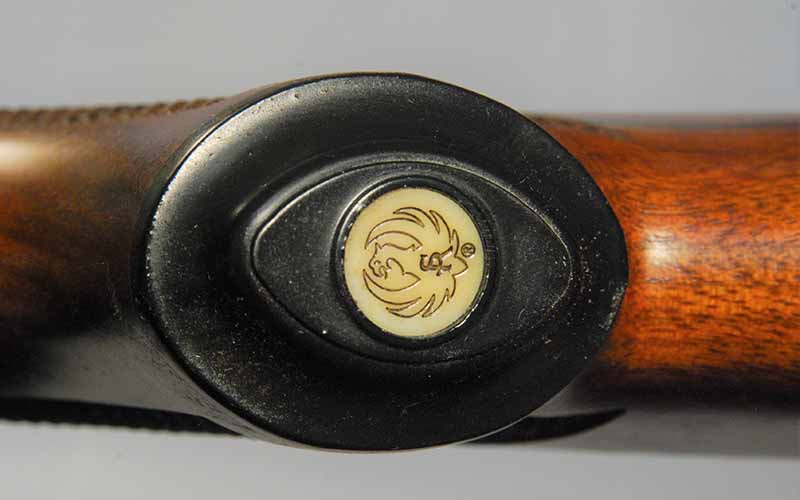
Despite the .243 Winchester, 6.5mm Creedmoor, and other newer cartridges, my .257 Roberts has not lost any of its versatility or capability. The Ruger Hawkeye Model 77 is an elegant rifle with excellent performance. If it were necessary to dispense with some of my centerfire rifles, the Ruger .257 Roberts would be among the last to go. I don’t shoot a “system,” and I don’t “run” ammunition, but my Ruger Hawkeye is a keeper.
Editor's Note: This article is an excerpt of Gun Digest 2024, 78th edition.
More Bolt-Action Rifles:
- The All-Un-American Straight-Pull Bolt-Action Rifle
- Sig Cross: The Bolt-Action Re-Imagined
- Sako S20: First True Hybrid Bolt-Action Rifle?
- A Contemporary Classic: The New Savage 110 Classic
- Rossler Titan 6: Practically Any Rifle You Want It To Be
- New Steyr Rifles: Steyr Pro THB McMillan

Next Step: Get your FREE Printable Target Pack
Enhance your shooting precision with our 62 MOA Targets, perfect for rifles and handguns. Crafted in collaboration with Storm Tactical for accuracy and versatility.
Subscribe to the Gun Digest email newsletter and get your downloadable target pack sent straight to your inbox. Stay updated with the latest firearms info in the industry.

![Best Concealed Carry Guns In 2025 [Field Tested] Wilson Combat EDC X9S 1](https://gundigest.com/wp-content/uploads/Wilson-Combat-EDC-X9S-1-324x160.jpg)


![Best 9mm Carbine: Affordable PCCs [Tested] Ruger Carbine Shooting](https://gundigest.com/wp-content/uploads/Ruger-Carbine-Shooting-100x70.jpg)
![Best AR-15: Top Options Available Today [Field Tested] Harrington and Richardson PSA XM177E2 feature](https://gundigest.com/wp-content/uploads/Harrington-and-Richardson-PSA-XM177E2-feature-100x70.jpg)
